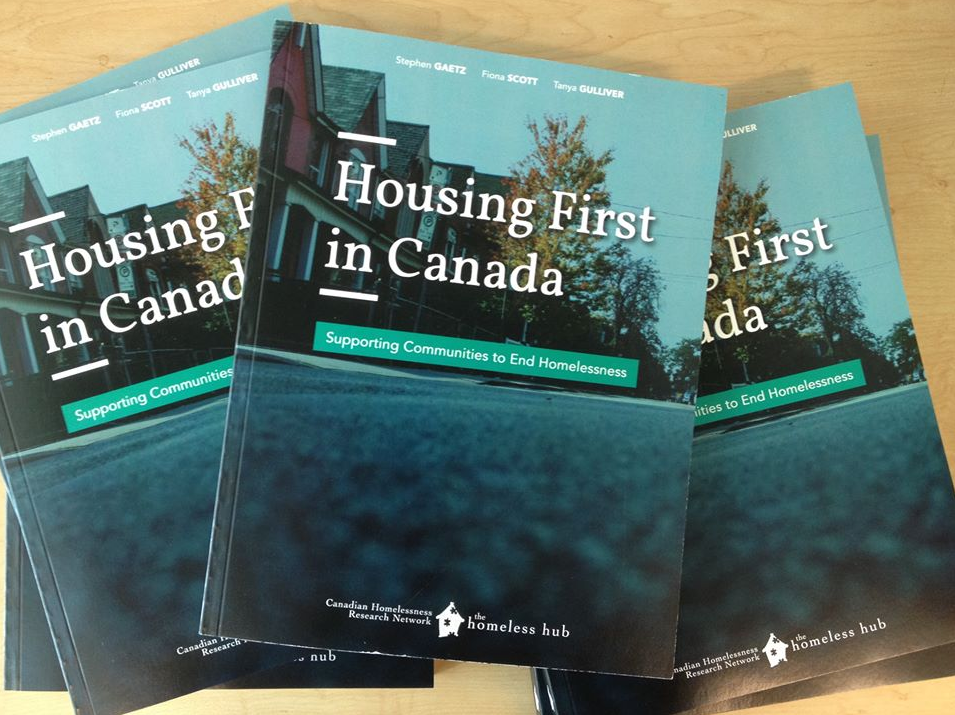This question was asked anonymously via our latest website survey.
Housing First is now a recognized best practice in Canada and is a crucial component of the Homelessness Partnering Strategy. It takes the approach that what people need first is secure, permanent housing; and offers further supports as needed. In Housing First in Canada: Supporting Communities to End Homelessness, Gaetz, Scott and Gulliver expanded on the principles of the model, writing:
Housing is not contingent upon readiness, or on ‘compliance’ (for instance, sobriety). Rather, it is a rights-based intervention rooted in the philosophy that all people deserve housing, and that adequate housing is a precondition for recovery.
Many case studies from Canada, the United States and Europe have shown that Housing First can effectively reduce chronic and episodic homelessness, and reduce use of emergency services and shelters. The model does, however, have some limitations and challenges. While these are explored in depth in the Canadian Housing First toolkit, I’ll highlight a few in this post.
The lack of affordable housing
Getting people housed quickly can be a challenge in tight rental markets and in rural areas. We have only just emerged from several years of the Harper government, which has a mixed history on housing. As Doberstein and Smith note in their report on the Harper government, Housing First and affordable housing, Canada has endorsed a model in great need of affordable housing – without seriously investing in affordable housing.
At current federal investment levels, local resources are so few that the rent supplement model is the only choice, despite its limitations. Non-profit purpose-built social housing, in contrast, has high up-front capital costs, but provides benefits over a long period provided governments maintain the buildings appropriately. Rent supplements to an individual in the private market are lower up front, but are continual and may actually inflate prices at the low end of the real estate market. Falvo finds that purpose-built social housing is more cost-effective in the long run than other approaches: an investment of $100 million toward non-profit purpose-built social housing would create 24,000 “affordable housing years” versus 17,000 with rent supplements, and 14,000 with an affordable housing tax credit given to individuals.
In other words, Housing First would work best with purpose-built social housing – but not enough of it exists. This also applies to rural and northern communities, where housing workers must be much more creative in finding housing options for people at risk of or currently experiencing homelessness.
Limited timeframe for supports
Housing First is a beneficial model for everyone, but especially those who are marginalized: people diagnosed with mental illness, people who are active drug users, and people who have a long history of living in poverty. Because of their histories with marginalization, many people need ongoing support to help them retain permanent housing – sometimes more than what Housing First programs allow. In Beyond Housing First: A Holistic Response to Family Homelessness in Canada, Noble wrote:
As the majority of Housing First programs are designed to intake those with high acuity or who have been chronically homeless, some workers felt this was simply not enough time to work with participants, particularly those who have been living with barriers such as trauma and addiction for multiple years, even decades. When philosophies of meeting people where they are at and not requiring service provision in order to receive housing are factored in, the process of engagement and change can indeed become a lengthy one.
Staff and client concerns go beyond the case management, counselling and other emotional supports. Housing First graduates often become ineligible for rental subsidies, a key component in many people’s ability to retain housing.
In the same report, some staff commented that the process by which clients become eligible for graduation can be oppressive in itself. For instance, some programs ensure that Housing First participants pass a home inspection before graduating and answer many personal and invasive questions, sometimes from a staff member who has not been their primary worker. In these situations, the Housing First program processes themselves can be limiting, stigmatizing and leave people without ongoing support.
Housing First is just a beginning
Perhaps the biggest limitation of Housing First is that it is still an emergency-level response; it is really just a start in ending homelessness. Giving people barrier-free housing and support is a crucial step, but we also need to build more affordable housing, work against growing income inequality and poverty, and provide appropriate support and care around mental and physical health issues. Moving towards a preventative approach and a systems-level response to homelessness can help ensure people don’t need Housing First in the first place.
This post is part of our Friday "Ask the Hub" blog series. Have a homeless-related question you want answered? E-mail us at thehub@edu.yorku.ca and we will provide a research-based answer.


